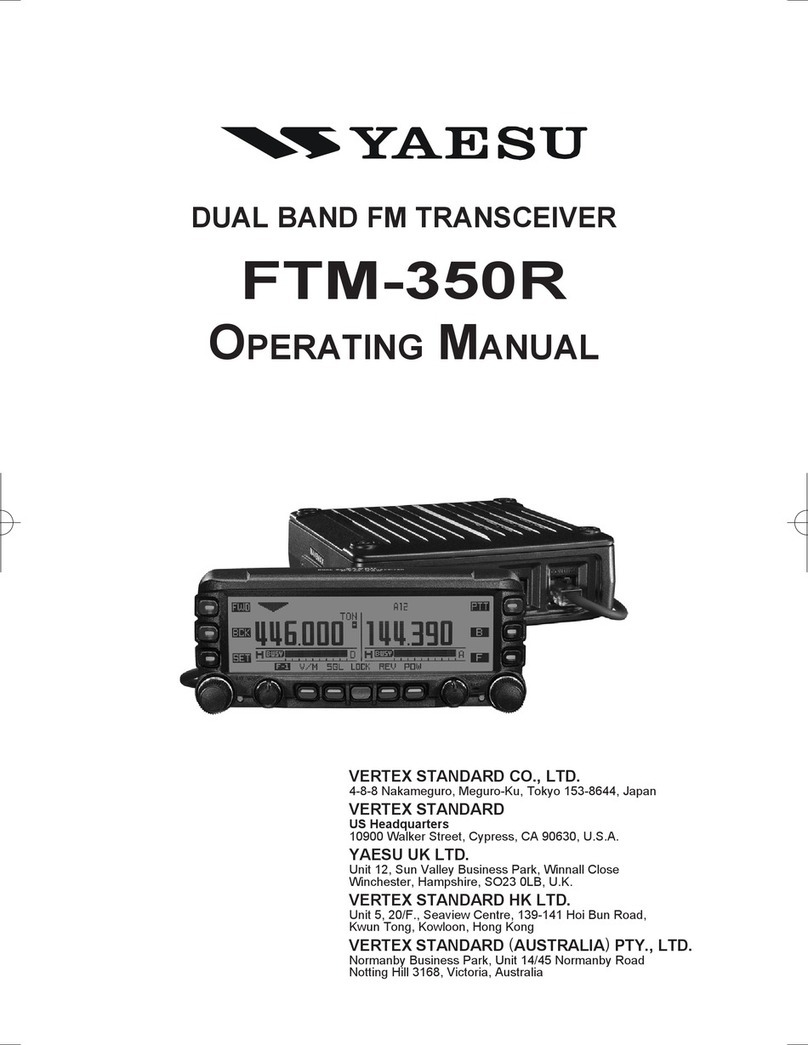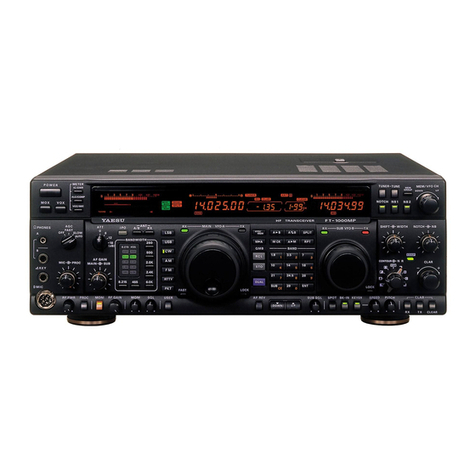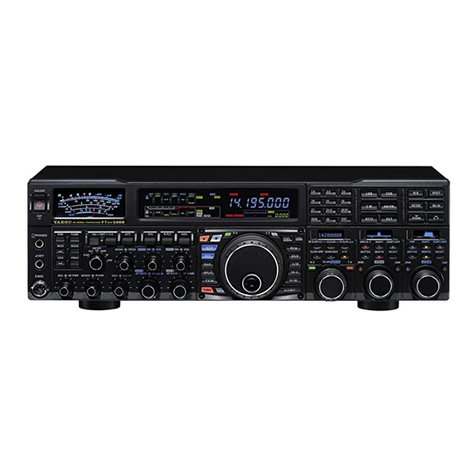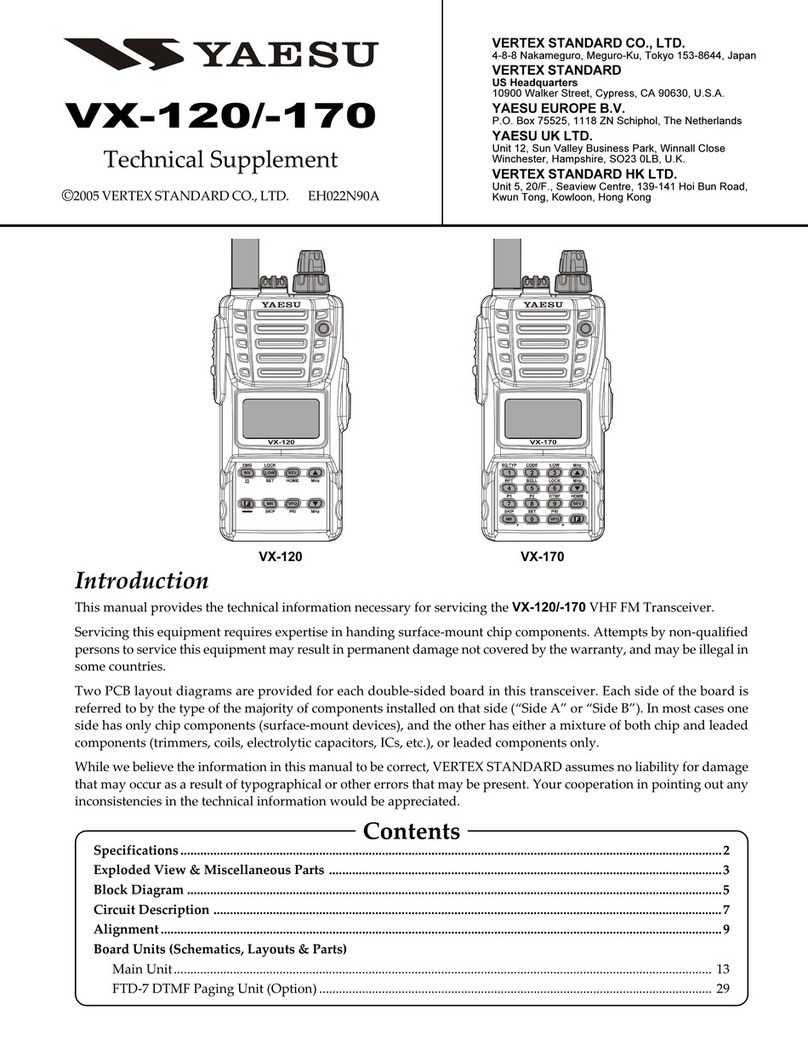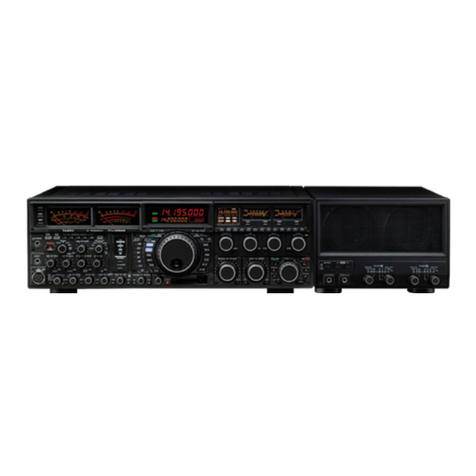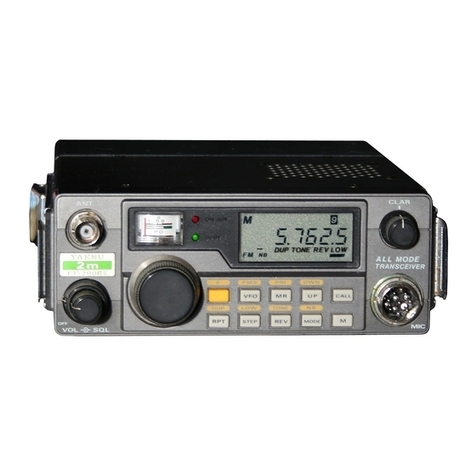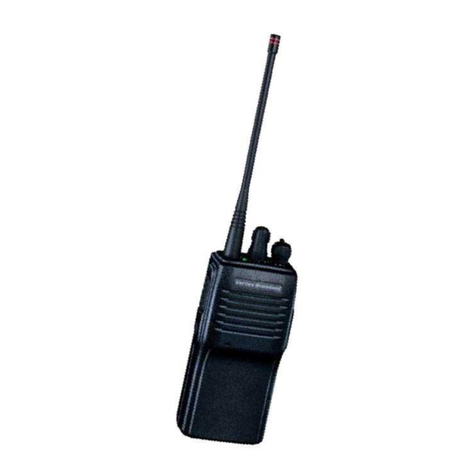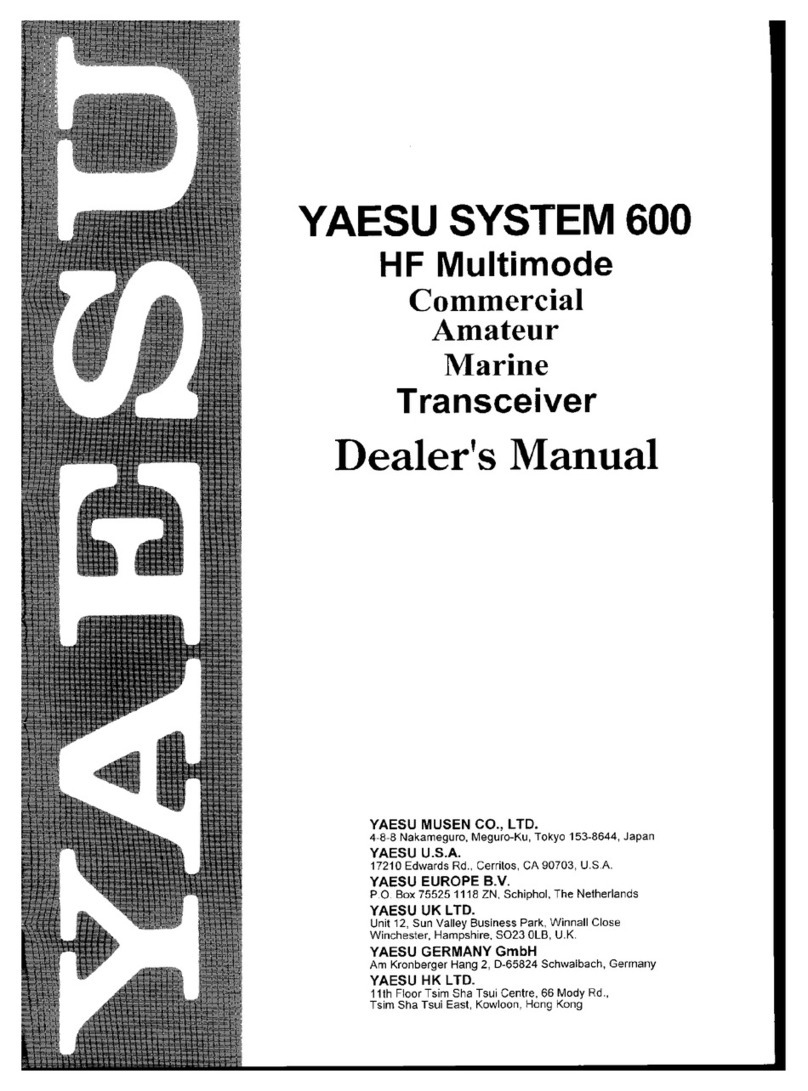General Description ..............................................................1
Specifications .......................................................................3
Plug/Connector Pinout Diagrams .........................................4
Accessories & Options .........................................................5
Supplied Accessories ..........................................................5
Available Options ................................................................6
Safety Precautions ................................................................7
Power Connections .............................................................7
Ground Connections............................................................7
Electrical Shock Prevention .................................................8
Antenna Precautions ...........................................................8
RF Field Exposure Advisory & Electromagnetic Compatibility ....8
General Setup .......................................................................9
Preliminary Inspection .........................................................9
Power Connections .............................................................9
Transceiver Location ...........................................................9
Grounding ...........................................................................9
Antenna Considerations..................................................... 10
Adjusting the Front Feet .................................................... 10
Memory Backup ................................................................ 10
Accessory Installation ......................................................... 11
Linear Amplifier Interfacing................................................. 11
Transverter Operation ........................................................ 14
Digital Modem (TNC, WeatherFax, etc.) Interfacing ............. 15
Other Digital/Recording Device Interfacing .......................... 19
CW Key/Paddle and Computer Keying Interface suggestions .. 19
Antenna Connections ........................................................ 20
Personal Computer Interfacing for Contest Software, etc......... 21
Front Panel Controls ........................................................... 22
LCD Bargraph Meter Indications ......................................... 30
Top Panel Access & Controls .............................................. 32
Rear Panel Controls & Connectors ..................................... 34
Operation ............................................................................ 36
Before Starting .................................................................. 36
MARK-V FT-1000MP Field Menu Programming................... 36
Receiving .......................................................................... 36
Amateur Band Selection................................................. 36
Mode Selection.............................................................. 37
Tuning the MARK-V FT-1000MP Field ............................. 38
Alternate VFO Operation (“Front & Rear” VFO) ............... 40
VFO Selection & Receiver Muting................................... 40
Keypad Frequency Entry ................................................ 40
Signal Tuning Meter Indications ...................................... 41
Expanded Tuning Scale.................................................. 42
AM Synchronous Tuning ................................................ 42
Sub-Display Modes Sellection ........................................ 42
General Coverage Reception ......................................... 43
Dealing with Interference ................................................... 44
VRF (Variable RF Front-end Filter).................................. 44
Front End Selections: Amp Selection, IPO & ATT ............ 44
AGC (Automatic Gain Control) Selection ......................... 45
Noise Blanker ................................................................ 46
IF Filter (Bandwidth) Selection ........................................ 46
WIDTH Control .............................................................. 47
SHIFT Control ............................................................... 48
Notch Filter .................................................................... 48
Clarifier (Rx/Tx Offset Tuning) ........................................ 49
Offset Display Mode ...................................................... 50
Transmitting ...................................................................... 51
Selecting Antennas ........................................................ 51
Automatic Antenna Matching .......................................... 51
SSB Transmission ......................................................... 52
Transmitter Monitor .................................................... 52
Microphone Tone Selection ......................................... 53
RF Speech Processor ................................................. 53
Class-A Operation ...................................................... 53
VOX Operation ........................................................... 54
CW Transmission........................................................... 54
Straight-Key Operation ............................................... 54
Electronic Keyer Operation ......................................... 55
ACS (Auto Character Spacing) .................................... 53
Keyer Settings ........................................................... 56
CW Pitch Setting and Spot Tone ................................. 56
AM Transmission ........................................................... 57
Digital Mode Operation................................................... 57
RTTY Operation ......................................................... 57
Packet Operation ....................................................... 58
1200-Baud FM Packet ................................................ 58
FM Transmission ........................................................... 59
Using SUB VFO B .............................................................60
Dual Reception ..............................................................60
Split Frequency Operation ..............................................62
Sideband Diversity Reception .........................................63
Bandwidth Diversity Reception .......................................63
VFO Tracking.................................................................63
Memory Features ................................................................64
Memory Structure ..............................................................64
Memory Programming .......................................................65
Copying VFO-A Data to Selected Memory .......................65
Recalling & Operating on Memory Channels .......................66
Memory Tuning ..............................................................66
Copying a Selected Memory to VFO-A............................67
Copying between Memories ...........................................67
Grouping Memories ........................................................67
Limiting Memory Group Operation ..............................67
QMB (Quick Memory Bank) Operation ............................68
Scanning Features ..............................................................69
VFO Scanning ...................................................................69
Memory Scanning..............................................................69
Memory Scan Skip.........................................................69
Memory “Masking” .........................................................70
Scan Resume Mode.......................................................70
Scan Skip Disable..........................................................70
Programmed Memory Scanning (PMS Memories P1 ~ P9) ..71
Advanced Features .............................................................72
EDSP ...............................................................................72
EDSP Functions ............................................................73
EDSP RX Audio Enhancement .......................................73
EDSP Noise Reducer .....................................................74
EDSP APF (Audio Peak Filter) ........................................74
IDBT (Interlocked Digital Bandwidth Tracking) System .....74
EDSP Auto Multiple Notch Filter ......................................74
Remote Control Operation .................................................76
Introduction ...................................................................76
I. Contest Keyer Control .................................................76
II. VFO/Memory Control .................................................79
III. MAIN VFO-A Control .................................................79
IV. SUB VFO-B Control ..................................................79
User-Customized Operating Mode ......................................80
Optional DVS-2 Digital Voice Recorder ...............................81
Overview .......................................................................81
Installation .....................................................................81
DVS-2 Controls ..............................................................81
Message Recording (from MAIN or SUB Receiver Audio) ....82
Playback (on the Air of Recorded Receiver Audio) ..............82
Message Recording (from Microphone Audio) .................82
Message Monitor (Playback Without Transmitting) ...........83
Message Transmission (“On the Air” Playback)................83
Phone Patch Operation ......................................................84
Tuning Meter Re-Calibration ...............................................85
CW Tuning ....................................................................85
RTTY Tuning .................................................................85
Packet Tuning................................................................85
CAT System Computer Control ...........................................86
Overview...........................................................................86
CAT Data Protocol .............................................................86
Constructing and Sending CAT Commands ........................87
Downloading MARK-V FT-1000MP Field Data .....................88
Status Update Organization................................................88
Selecting Updata to Download............................................90
1-Byte Memory Channel Number Data Structure .................90
16-Byte Data Record Structure ...........................................91
Coding Examples ..............................................................93
Menu Selection and Setting ................................................98
Installing Internal Accessories .......................................... 112
TCXO-Unit ...................................................................... 112
Main Receiver 2nd and 3rd IF Filters ................................ 113
Sub Receiver CW Narrow Filter ........................................ 113
Miscellaneous ................................................................... 114
Lithium Battery Replacement ........................................... 114
Power-on Setting ............................................................. 115
Changing the AC Input Voltage Selector Switch................. 116
Tabel of Contents




